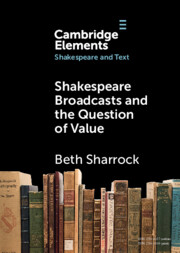Refine search
Actions for selected content:
5 results

Shakespeare Broadcasts and the Question of Value
-
- Published online:
- 07 February 2025
- Print publication:
- 06 March 2025
-
- Element
- Export citation
Chapter Fifteen - Close Reading (and) Textual Bibliography
- from Part V - New Directions
-
-
- Book:
- Margaret Cavendish
- Published online:
- 28 April 2022
- Print publication:
- 12 May 2022, pp 233-247
-
- Chapter
- Export citation
3 - The Printing of Modern Life
-
- Book:
- Modernity in Black and White
- Published online:
- 06 April 2021
- Print publication:
- 15 April 2021, pp 127-171
-
- Chapter
- Export citation
225 - Popular versus Scholarly Texts
- from Part XXIII - Printing and Reception History
-
-
- Book:
- The Cambridge Guide to the Worlds of Shakespeare
- Published online:
- 17 August 2019
- Print publication:
- 21 January 2016, pp 1627-1635
-
- Chapter
- Export citation
Part XXIII - Printing and Reception History
-
-
- Book:
- The Cambridge Guide to the Worlds of Shakespeare
- Published online:
- 17 August 2019
- Print publication:
- 21 January 2016, pp 1611-1660
-
- Chapter
- Export citation
